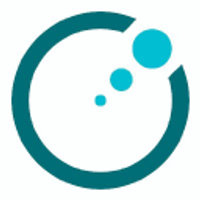
Elekta AB (publ)
STO:EKTA B
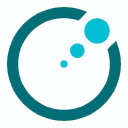

| US |

|
Salesforce Inc
NYSE:CRM
|
Technology
|
| CL |
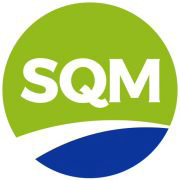
|
Sociedad Quimica y Minera de Chile SA
NYSE:SQM
|
Chemicals
|
| US |

|
UnitedHealth Group Inc
NYSE:UNH
|
Health Care
|
| US |
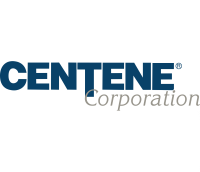
|
Centene Corp
NYSE:CNC
|
Health Care
|
| US |

|
Charles River Laboratories International Inc
NYSE:CRL
|
Life Sciences Tools & Services
|
| US |

|
Autozone Inc
NYSE:AZO
|
Retail
|
| US |

|
ServiceNow Inc
NYSE:NOW
|
Technology
|
| US |

|
Valero Energy Corp
NYSE:VLO
|
Energy
|
| US |

|
Palantir Technologies Inc
NYSE:PLTR
|
Technology
|
| US |
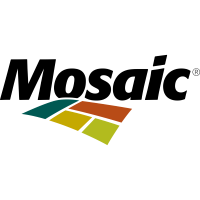
|
Mosaic Co
NYSE:MOS
|
Chemicals
|
| US |

|
Roblox Corp
NYSE:RBLX
|
Media
|
| US |
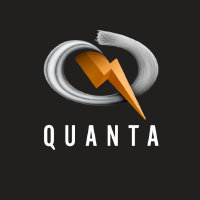
|
Quanta Services Inc
NYSE:PWR
|
Construction
|
| US |
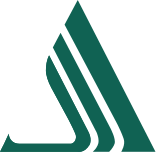
|
Albemarle Corp
NYSE:ALB
|
Chemicals
|
| US |
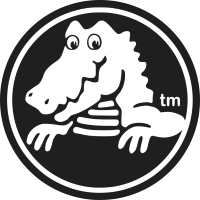
|
Crocs Inc
NASDAQ:CROX
|
Textiles, Apparel & Luxury Goods
|
| US |
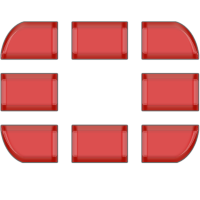
|
Fortinet Inc
NASDAQ:FTNT
|
Technology
|
| US |

|
Starbucks Corp
NASDAQ:SBUX
|
Hotels, Restaurants & Leisure
|
Utilize notes to systematically review your investment decisions. By reflecting on past outcomes, you can discern effective strategies and identify those that underperformed. This continuous feedback loop enables you to adapt and refine your approach, optimizing for future success.
Each note serves as a learning point, offering insights into your decision-making processes. Over time, you'll accumulate a personalized database of knowledge, enhancing your ability to make informed decisions quickly and effectively.
With a comprehensive record of your investment history at your fingertips, you can compare current opportunities against past experiences. This not only bolsters your confidence but also ensures that each decision is grounded in a well-documented rationale.
Do you really want to delete this note?
This action cannot be undone.

| 52 Week Range |
61.8
87.8794
|
| Price Target |
|
We'll email you a reminder when the closing price reaches SEK.
Choose the stock you wish to monitor with a price alert.

|
Salesforce Inc
NYSE:CRM
|
US |

|
Sociedad Quimica y Minera de Chile SA
NYSE:SQM
|
CL |

|
UnitedHealth Group Inc
NYSE:UNH
|
US |

|
Centene Corp
NYSE:CNC
|
US |

|
Charles River Laboratories International Inc
NYSE:CRL
|
US |

|
Autozone Inc
NYSE:AZO
|
US |

|
ServiceNow Inc
NYSE:NOW
|
US |

|
Valero Energy Corp
NYSE:VLO
|
US |

|
Palantir Technologies Inc
NYSE:PLTR
|
US |

|
Mosaic Co
NYSE:MOS
|
US |

|
Roblox Corp
NYSE:RBLX
|
US |

|
Quanta Services Inc
NYSE:PWR
|
US |

|
Albemarle Corp
NYSE:ALB
|
US |

|
Crocs Inc
NASDAQ:CROX
|
US |

|
Fortinet Inc
NASDAQ:FTNT
|
US |

|
Starbucks Corp
NASDAQ:SBUX
|
US |
This alert will be permanently deleted.
 Elekta AB (publ)
Elekta AB (publ)



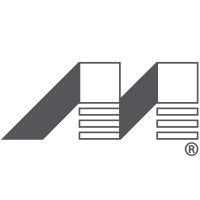


 You don't have any saved screeners yet
You don't have any saved screeners yet

Good morning, everyone, and warm welcome to Elekta's presentation of the first quarter in the fiscal year 2019 and '20. My name is Cecilia Ketels. I'm Head of Investor Relations here at Elekta. And with me here today in the slide presentation in Stockholm, I have Dr. Richard Hausmann, our President and CEO; and Gustaf Salford, our CFO, who will present the result. And you can see the agenda behind me. Richard will start by talking about the performance in the quarter. And then Gustaf will give you details about the financials. And Richard will then summarize the highlights and say some words about the outlook going forward. And as usual, we end with some Q&A session, both from the audience here in Stockholm and those participating in the telephone conference call. But before we start, I want to remind you that what we are discussing today include forward-looking statements. And those are projections about the net sales, the profitability, cash flow and projects and product development. And these -- the outcome of this can materially differ from the statements that we make because these are uncertainties and risk involved. And with that said, I hand over to you, Richard.
Thank you very much, Cecilia. And good morning, everybody here, and good morning, everybody on the screens and the phones outside. So we're trying a new principle here with a live presentation, and I'm very happy to have that. I'm happy to see you directly and all of you outside there, we'll invite you for next time, maybe come and join us here in Stockholm. So the Q1 performance, before I start into the details, I just would like to highlight that we, at Elekta, we see ourselves as we are precision radiation medicine. We want to provide everyone around the world who needs cancer care having access and having benefits from the most precise and most personalized radiotherapy methods available. And we drive this envelope forward. And with the word precision, we mean that you have to know exactly where the tumor is, that you hit tumor -- and hit the tumor right with the least margin, with the least toxicity. At the same time, it's not only the geometric precision which you need, you need also the maximum information about the patients, the individual patient, the person behind it, the history, the lab data, et cetera. That's why we have software provided to the -- to our customers, which gives all this information at the right time, with the right precision at the fingertip, which creates an outcome as well. With the word radiation, we mean that we see ourselves as the experts, the leading experts in how to deliver a lethal dose of radiation to the tumor, to the cancer and kill it. And that's our core competence. And that's why we are strong. And that's what we're focusing on. We don't want to go to chemistry. We don't want to go somewhere else. We want to focus on that one and make that perfect and more and more perfect to the benefit of our customers and finding the patients. And with the word medicine and not therapy, it's medicine what we're talking about, we include the other methods of cancer care like surgery, like chemotherapy, like immunotherapy with our software and workflow tools so that we make our customers able to use the best individual mix of these technologies to heal and to care for the patients. So that's the idea of precision and radiation, medicine. It's radiation as core. It's precision as our belief. And it's the totality of the workflow, which we want to deliver to the patient. Now going into the quarter, it's always good to go a little bit back and say, "Okay, how do we develop? How is the trend?" And this is basically a trend. And just looking at the last 3 years now, you see a consistent growth in the net sales, accelerating in the last year, both in solutions, so in our products, both software and hardware products and treatment solution products as well as services. And we are quite well on the way. Now if you look at -- would look at the similar number on orders, you would even see a higher number. So the run rates are positive. On the EBITA margin, you can see on the chart that we are right now on a different level again of our EBITA margin, between 19% and 20%, with a little kind of instability around our change from IFRS to the IFRS 15. It's a little ripple effect more related to this accounting principle than any real business behind it. So -- but you see that there's another level of EBITA we reached now and we move forward as we have shown in our guidance. And I come to that later on. So I think we did our job on cost reduction, expense discipline, et cetera and price discipline. So that led us to this EBITA, and we are moving forward. Now coming to the Q1. Q1 is a historically high order intake quarter, so we kick-start the year. So as I say, it was a quite good quarter. Organic order intake growth was 32%. Even without this large GenesisCare partnership, which we did on the Unity side, I come to that later, we would grow 13%, so double digit also. Organic net sales is 9% growth. Very positively, our gross margin increased by more than 3 percentage points to 42.6%. And that reflects actually that we have a good price discipline. We worked on our cost situation, and there's still more to do, to be honest, but you see effects. And we have a better product mix as well. Our EBITA margin came out with 13.9% compared to 13.7% a year before, a little increase. It looks a little too small of an increase, but it's masked by some one-off effects. For example, last year's quarter 1, we sold off our MEG business. Gustaf will go into more details. This is just one effect of it. But the underlying profitability -- EBITA profitability margin would be higher than this one. So I'm very positive on that side as well. When I -- when we look out on the global distribution of our order income growth, you see an extremely strong Europe, Middle East and Africa number of 64%. It's historically high growth. I'm very happy to report that this is a lot also driven by Middle East and Africa, but also in Germany, Italy, we have high order -- especially high order income. Five new Elekta Unity orders come from this region. Out of this 5, 3 are part of the GenesisCare deal. In Asia Pacific, we grew 31%, strong order intake as well. Good development in China, despite the fact that the new program is not yet hitting, yes? So it's -- our 8% growth is coming from what I would call the normal good dynamics we see in China, strong market leadership in China as well. But also India is now coming along very well, Indonesia, Australia. Six new Unity orders, which are all part of this GenesisCare deal. In North and South America, on the totality, we were stagnant. If you would split up North and South, we'll see a growth in North America. We had also a few delays in North America, particularly on the Unity side, I'll come to that, but there's a stable development overall. Good growth on the side in North America, 2 new Elekta Unity orders in North America as well. So we're also optimistic about our North America business. Highlights so far in this fiscal year, how we see it all related to the idea of precision radiation medicine, the GenesisCare and the Unity deal, of course, is a major milestone. It shows that one of the largest oncology chain in the world is relying on our technology to provide personalized precision, high-quality radiation treatment to their patients in the special cases, in the difficult cases. And I come to that in more detail. As I mentioned before, in North America, we had a few delays of orders. One of them was 2 Unities from UT Southwestern Medical Center in Dallas. One of the most prestigious and most advanced, also academically most advanced sites in the United States have decided now to go with us on high-field MR-linac technology, very happy about that. This order came in, in August now, a few days -- a few weeks ago. And we are very happy about that. That shows that there's a lot of pipeline also related to North America. Another highlight of the beginning of the year was our cooperation contract with C-RAD, a company from here, from Sweden, which provides -- one of the market leaders in providing surface detection -- surface imaging for localizing, identifying and positioning the patient in a standard linac systems. And it's a typical device, which we just added to installations. And we see that this so-called Catalyst product of C-RAD is very well accepted all around the world. And we want to work closely together, integrate that further into our offering so that it's a more complete offering, as we have done it, as you know, with our quality assurance, acquisitions and cooperations, so we are bringing things together all along in our strategy. The GenesisCare collaboration or partnership is not a new thing in the sense of the partnership, because I would say GenesisCare is one of our largest global customers and probably is the largest global customers with 65 linacs from us. All their sites are running MOSAIQ, our software. So quite visionary team around Dan Collins, the CEO, and he stated clearly in the press release that this is -- that Unity is an innovative technology representing a new era of radiotherapy. And GenesisCare overall has a high-quality ambition and standardization ambition of their sites. It's exactly our mindset too. That's why I'm so happy about this partnership. Needless to say that I'm also happy about the fact that they ordered 9 Elekta Unity systems now. The order value is around $58 million plus service, so it's excluding service. The sites are in Australia, Southeast Asia as well as Europe. You might know that GenesisCare is very strong in the U.K. as well as in Spain, but they're also moving further in other countries in Europe. This partnership is not only a transactional partnership; it's also strengthening our notion of data collaboration, real-world data. So in this extended strategic cooperation with GenesisCare, we are now having a data collection agreement with them for the Unity sites to use those data now in our internal processes to optimize our products, our workflows, our software tools and standardize that as well. That will enhance further our Elekta Unity workflows, and we will learn a lot from that, together with our MOMENTUM study, which is more on the academic side. But this is more on, I would call it, the real-world data on cancer care as it comes along all around the world. So I think that's a very positive move, and I'm very happy to have GenesisCare and Dan Collins as a person, as a collaborative partner further on in the future. When you look at the worldwide distribution now of our orders on Unity, we have in total, including these 2 new ones in this quarter already, yes, 60, 58 including Q1, 69 including the 2 from Dallas, 28 in Europe, 14 in North America, 18 in Asia Pacific -- in Asia and Asia Pacific. So we're reiterating, of course, our number 75 for mid of next year. On the clearance side, we have gotten quite a number of clearances for Unity now. The Canadian clearance for clinical use, this is the second one which was necessary in Canada. We reported another one for the registration earlier. July 2019, the Brazilian approval came as well the interest in Brasília, Brazil on Unity. And the Japanese approval came quicker as we expected it. So we see, in particular, Japan was a very interesting high-end market as we know, but new technology-driven market, as you probably know, and also from there proton and carbon initiatives in the past. Ongoing approvals are now in Russia, in Korea, and as you know, in China. And that's the CFDA process is moving along as planned. The rest of blue ones are approvals, which we have reported earlier on already in the United States, of course, Europe and Australia. So overall, we're kind of getting now there that we have all the major markets there. China, of course, is still one which needs probably until mid of next year to be completed -- next calendar year. But that's the process, which we need to go through with the clinical study and that's usual. Okay. Now one of our sites, which is the most active one, most likely, is the University Hospital of Tübingen. And they have installed or went clinical, as you might recall, in less -- not even a year ago, I think in September, October last year. And they have done already, a few weeks ago, the 1,000th fraction. They're treating really on a 15 -- 10 to 15 patients a day on the Unity system with great results. It's amazing team and are really happy to have them also as a reference site in Tübingen, Germany. What makes me personally most excited about Unity, besides the fact that I like the technology, but that's a different story, is this: it's the clinical results, the clinical cases. More than 350 patients have been done all around on these now 11 systems, which are treating patients every day. And you see a few examples of this here. And the image quality and the precision we generate or our customers generate with this MR -- high-field MR images to hit small lesions precisely and with a lethal dose of radiation, yes, and even look at then the motion in real-time as you see on these movies here with the quality, which is really amazing. Even for me, as an MR expert, having all those other companies' MRs promoted, but I think the Philips MR is very good in that one. In my history, I have to say that this is the most amazing part of it, the Unity does what it has promised, and we get that feedback from the customers. And yes, we were a little bit late compared to ViewRay, but I think this shows that high-field and also the dynamics recently in the market and the success in the market with Unity shows that more and more customers, potential customers realize the advantage of high-field MR linacs. And these images, which enable the patients -- the customers to do treatments with less toxicity, less side effects, go to places where they never dared to go, yes, because of all these adjacent sensitive organs, that's really what makes the difference. This is a particular case where I think it's so visible, and maybe it's easier to see that when you -- to understand and really see it. I mean, what you see here is a planning CT on the liver. This arrow shows you -- or actually doesn't show you the liver tumor, the metastasis in the liver. Even if you give contrast agent, which is the left lower picture, you don't see an enhancement of CT contrast in this lesion, so you don't see it. Now with the MR image and the navigated T2 image, you see clearly the lesion. You can even reformat this picture, which is actually imaged, but it's a 3D image, into the coronal slide. You see it also there as a reconstruction. And you can hit it basically. And you can see on the third row the DWI, diffusion-weighted imaging, this is basically activity imaging at the same MR system, hybrid MR system inside the MR-linac. Yes? And you see that too. And you see it on the reformat image as well. And then the last one is the real-time image where you see basically the movement of this tumor in this red circle and you can track it real-time, yes?So this is the quality which Unity gives to our customers and they appreciate this. For example, from the Medical College of Wisconsin, they have also done an extremely interesting pancreas case recently with the Unity. So that's really what excites us as a clinical feedback. Now these are the 11 sites now, which are using Unity clinically. The last one going online also, not the last one who purchased it, is Sunnybrook, one of the consortium members, but they had a terrible time to get there. Their building fixed and even their bunker done, but now they're treating. They have also done a great case already. So these are 7 consortium members now and 4 other sites like Odense, Tübingen, Shandong Cancer Hospital for their study in China. And Hong Kong Sanatorium is live and doing -- treating patients as well. The clinical experience this chart we showed, we updated it now. There are more than 350 patients done, 50% adoption rate for stereotactic treatments, which is natural, the true stereotactic treatment with this system, because we have the images, yes? So that's normal. The minimum session time was 16 minutes, but I would say average is between 20 to 25 minutes, including an adaption of the target, yes? And there were 18 different cancer types treated, including head and neck tumors, which you might have heard that, "Oh, head and neck tumors, you have to have a proton system." No, no, you can have a very, very good result with our MR-linac, also because the good linac precision, but also because of the imaging you have there. But these little tiny nodules, which are on the upper left picture and close to the bowel, these are the oligometastases, and you see this big part of the clinical results come from oligomets. This is the application as in, for example, is the application for the Gamma Knife in the brain. It's the same philosophy: precision, individual mets -- treated individual mets rather than something like a block of treatment, because you didn't know what you were to treat. So prostate oligomets, rectum, these are the major ones where the soft tissue aspect of MR is critical. Liver, you saw that, bone, breast, et cetera and the normal ones. And pancreas is starting. A few words about this new U.S. radiation oncology alternative payment model. I actually have to say, I kind of find this name a little strange, because what it does basically is it -- honestly, it supports the strategy of precision radiation medicine. I'm personally happy about the fact that finally, also in the United States, at least for Medicare, but that's basically where it starts typically and goes through the whole system, the idea of outcome and not the idea of number of fractions is the key thing to pay for. And that will promote hypofractionation, as our Unity does, as we do it on our normal linacs with SBRT, SRT. And the Gamma Knife is one fraction. So from our product point of view and product portfolio point of view and our philosophy point of view, I think we are very welcoming this one. This is not new in other countries, but in the United States, this is important, because it's such a huge market. So it will increase hypofractionation, stereotactic body radiation treatment, stereotactic radiation surgery in the brain. It enhances efficiency and workflow. It will help us to promote our efficiency tools in our software, for example, MOSAIQ Analytics, to help our customers to see how efficient they are. Because this is not about now doing 36 fractions anymore and the more fractions you do, the more you get paid. Now it's about less toxicity, it's about less complifications, it's about shrinking the margins and reducing the complexity of the treatment. So I think also our Unity is perfectly fitting into this one. Also, it doesn't have yet a code, yes? So that's why we see for Brachy, this is precision by going there, I always say it this way. The Gamma Knife, which is precision by definition originally already and the linacs SRS/SBRT, we see actually a positive effect from this new payment scheme. And for MR-guided RT, the Unity, without having a code, I think this is a pure promoter of this idea, yes? So I personally believe strongly this is a good thing happening and a good move, and we will benefit from that. And with that, I hand over to Gustaf for a few more financial details. Gustaf, please?
Thank you, Richard. So hi, Gustaf Salford, and I will briefly go through the financials of our first quarter. So if you look at the P&L for the quarter, there's 2 things that really stands out, I would say, and it's the revenue growth that was strong and it's also the gross margin improvement in the quarter compared to last year. Net sales, as Richard mentioned, we saw both growth on the service side and the solutions side. But if you look into the regional aspect of it, you had a stable, flat development in North-South America. [ Guyana ] was growing and Brazil was growing. Europe, Middle East, Africa had a strong 13% growth. You saw growth in countries like U.K., Spain, Austria. So Western Europe was showing strong numbers. And for Asia Pacific, with a 14%, also a strong number; and China came in with very strong installation and delivery in the quarter. Going down to gross margin. We came in at 42.6%, so a significant improvement versus last year. And we saw the service coming back, we saw the software coming back, also Brachy supporting these better project margins, but it was also better price points for our linac business. So we've seen ASPs and prices, as you remember, going down a bit, stabilizing, but now we see them coming on the higher level, better price points into our first quarter. On the EBITA level, I will come back, but we came in at 13.9%. I've got some questions on what is the IFRS 16 impact on EBITA. And in the quarter, that was 0.1%, so around SEK 4 million in the quarter. And that is in line with what we talked about in Q4 that it would be somewhere around SEK 20 million for the full year. It has a bigger effect on EBITA, around SEK 55 million in the quarter positive. And on a net income basis, it had a negative SEK 8 million. So that's the one-off effects. You can also see in the net financial items that they increased in the quarter. One of the key effects was this IFRS 16 leasing reporting. If we then go back to the EBITA bridge and go through the main drivers. Last year, we came in and reported at 13.7%, but then you need to factor in that the SEK 76 million we got from the MEG in divestiture, had an impact on that number of 2.7%. So in a way, like-for-like, we started with 11%. We had a good volume contribution, but also this project mix that I talked about, pricing, but also software service Brachy. However, we continue to invest in building up the momentum in Unity. So selling expenses for Unity less capitalization after the CE Mark and then, in that way, also some more amortization. Admin and other expenses quite flat versus last year and then quite a big effect on the FX rate differences, the net between the 2 years. When we put back the amortization, we get to the EBITA level of 13.9% in the quarter. If you look at the total FX effect on EBITA level, that had a negative SEK 50 million effect in the quarter. If we break down the expenses and what you saw in the P&L, we continue to focus on good cost control across the company. But it's key for us to also invest in 2 key areas: Unity, as I mentioned, the continued commercialization and rollout of selling and marketing of it; but also going into new markets, also market expansion, setting up new offices and so on to capture that growth. Admin expenses went down with 2%. And then the net R&D went up with 14%. But when you break it down and factor in the capitalization and amortization effect, you will see that gross R&D spend, as expected, were at minus 10% versus last year in the quarter. If you then look what this gross R&D as a percentage of sales, an important KPI for us, is currently at 10%. So it's where we have been discussing previously, around 10% to 11%. That's where we expect it to be also going forward. So total, that gives us a constant exchange expense growth of 7%, but if you take away the capitalization and amortization, we are at minus 2%. Cash conversion and cash flow came in weak in the quarter, and you can see it in the cash conversion rate of minus 116%. On a rolling 12-month basis, it is now at 50%. You see increase in paid tax, but also in financial net. We talked about a couple of those drivers. But it's really about the big increase in working capital in the quarter. If you look at that increase, you can see a couple of key drivers. You will find that the inventory goes up. And inventory, we're continuing to prepare for the Brexit, hard Brexit scenario in October. So we're continuously building up in Mainland Europe inventory volumes to make sure that we can deliver products to our customers also over transition period throughout Brexit. However, Unity, for example, the Chinese projects, it's also tying up inventory. In a way, a positive thing, because we want them now to be installed and getting clinical out there. But you see that impacting our inventory currently. You also have effect of AR. So the collections were not strong in Q1, explaining a big reason for the poor cash flow. So that is big focus area for us right now here in Q2, and we're working a lot globally with our collection volumes. And as you remember, the Q4 numbers were really strong on the cash flow. So net working capital as a percentage of sales, it has gone up from minus 15% to minus 7%, but we expect it to come down again. And I often talked about the minus 10% level. That's where we should be able to be at. On the financial position, we continue to have a strong financial position. Our net debt-to-EBITDA increased to 0.4 from the 0.2 we had last quarter, driven by the cash flow impact. And you can also see that we'll continue to define our definition of net debt as excluding leasing liabilities. But if you add them and can clearly see them in the report and also on the balance sheet, you would add another SEK 1.2 billion to the already SEK 1.2 billion net debt we have to come to the SEK 2.4 billion level. However, how we will define net debt-to-EBITDA is excluding this leasing impact. So with that, I would like to hand over to Richard for the outlook.
Okay. Let me just give you a short outlook, and I would like to start with 4 new faces maybe for you. Not all of them are new faces for me. We have strengthened our executive management team now with 2 external hires. Sukhveer Singh will take -- is taking over our software -- OIS software business line. He comes from our main competitor. And Lionel Hadjadjeba, I have to learn the name, or Lionel, he is taking over the MR-linac business line. So that we drive now these business lines -- product business lines on a high level in the -- as a member of the executive management team. Habib is already since a good year leading our Middle East-Africa business out of Istanbul. And his responsibility includes now also India. And he is now also a member of my inner management circle. And last but not least, normally ladies first, but last but not least, Verena Schiller. She's taking over the neuro business line, the Gamma Knife and the Frame, also a member of the executive management team. She has a long-standing experience in the Gamma Knife from the German business and leading the Tiger team in the last 2 years for the neuro business. And you remember good results and good dynamics, and we are very happy to have her now also as leading this business line. Overall, there's a lot of domain expertise in these people and a lot of execution power. So I'm very happy also strategically to have a stronger management team now, and we focus on business lines in the future. Our guidance and outlook scenario for the years to come after this year stays the same. Our net sales, we see an 8% to 10% net sales growth for this year and the coming years. So there is a strong market also behind it. And I have to say, I more and more believe that with our focus and our introduction of the MR linac, together with another company, we are driving a new market as well, which our main competitor is right now not seeing, yes? And maybe also, that's the reason why we might be a bit more optimistic about the market because we see a bit more market. So that's on the net sales side. On the EBITA margin, we reiterate the 19% for this year. And the scenario for the future is 20% plus 2% -- or 200 basis points for more towards the 2022/'23. We're growing our installed base right now quite well. We continue our cost control and our discipline in improving our processes to make things cheaper and better, yes, from the outcome, and we keep our focus on innovation. Because I mentioned, the 10% on R&D; I'm a deep believer in the idea that innovation, both on the software side as well as the treatment solutions side is driving the success of this company and as it has driven in the past. So -- and Elekta Unity is certainly one of our driver for the future as well.Good. So in summary: new technology driving the market, increasing interest and, obviously, also realization of orders on the Unity side; pipeline's strong; momentum, growing; very good order growth; gross margin and EBITA pickup; and I overall want to give a very positive outlook actually for Elekta.Thank you very much, and I hand it over to you.
Thank you. Thank you, Richard. Well, before we start the Q&A section, I just wanted to remind you of our investor meeting at the ASTRO in Chicago. The meeting will be on the 16th of September, a Monday and at Hilton Chicago. I hope we can see some of you there. There is a good opportunity to meet not only these guys but also some other members of the executive team.And with that, we start the Q&As.
And I think we first take questions here in the audience, but while we're handing out the microphone, you might sign if you will have some questions. I wanted to hand it over to the operator to remind the participants on the conference call how to register for asking questions there.
[Operator Instructions]
Okay. And then we have questions here in the room. Please go ahead.
Johan Unnerus, Pareto. Yes, on the gross margin, it's varied quite a lot recently. How much should we read in this positive takeaway in Q1? Is that -- to what extent do you see that the change, for example, in net prices? You mentioned that was more positive. You had contribution from software and services. To what extent is that sort of a trend or sustainable going forward?
We saw a very good development in the quarter from softwares and Brachy and some of the business lines contributing. And it was an easy comparison with the 39.1%. So current levels are very high on a rolling 12-month basis, I would say. So that's what I can say, so.
Well, I would add to that, that it is more price discipline and less yet cost reduction. And as I have pointed out several times in the last quarters, we are working on significant levers on cost reduction. So I am optimistic that we have other tools next quarters to come or at the year-end more because some of those take a little time to realize that we will keep our gross margin up.
And on the Genesis deal and Unity and services, is that -- should we expect sort of service contribution in line with the rest of the linac business in terms of percentage of order value? And does that kick in from already during the first year or does it kick in later, as from installation, of course?
No. So the Unity, as any other system, has 1 year warranty. So it kicks in after 1 year after the installation. Not all of those 9 systems will now immediately be installed, but they will be phased, of course, in the next 2 years or so. So then 1 year is to add. But the overall numbers are comparable to -- percentage-wise comparable to the linac.
And would 6% to 8% be completely wrong or thereabouts or?
Not completely wrong.
Okay.
But then, I think on the margin, there is a bit of a scale in the service business as well, when you kind of increase the installed base. Initially, you have higher amounts of service engineer per regions, let's say, because the relative -- because their installed base is smaller. But then you see it increase the margin as you go along.
Okay. Now we have questions from Sten Gustafsson at Nordea.
First of all, on China. Can you give us an update on what's going on with this big investment that is the 1,400 linacs that we have heard about? And also, if you could quantify the number of installations of Unity you made during Q1 would be helpful.
Okay. This larger, you call it, investment program, which was -- it was the original name for it, what happened up to now that the licenses were distributed or are under distribution. So the different municipalities, hospitals, government -- or city hospitals or countryside hospitals wherever they fit, they basically apply for licenses and these licenses are now distributed or under distribution. That's not meaning that the batches are yet distributed, okay? That's the difference. And maybe we overestimated. That's part of it because it was called investment program, but we analyzed it very thoroughly with our local team, again, and we are connected quite well in China. That's the situation. So the licenses are given to the different hospitals. And there is a distribution more towards outside the big city centers' hospitals. But now it's, of course, up to them to -- in different forms, to either apply for batches from the government or to do public-private partnerships. All of that is happening. GenesisCare, for example, is also going into China and helping them to realize that. So this will take a bit more time. And we don't see that coming for this calendar year, I would say, yes.And then the other question was on our installations. So we have 11 systems, which are clinical. We have 21 systems, I think, in total installed and on the verge, so to say, to go clinical. They need always some kind of trainings, et cetera. And there are, I think, like 24 or so also shipped, so to say. So we are moving quite disciplined out and doing the installations as we have. We have a good backlog, yes.
I think it's important, again, on the Chinese units that we will wait until CFDA clearance before we take the revenue, but we have installed or the last ones are under installation to do the CFDA approvals, and they are not part of this year's revenue guidance.
And do we have more questions here on the floor? Yes, Kristofer Liljeberg at Carnegie.
Yes, first, I just need to follow up what you said about China. You don't expect any positive impact on orders this year or sales this fiscal year?
For sales revenue -- you mean for orders?
Yes. The question is do you refer to order impact or sales impact from the Chinese program this year?
Both, I would say. Both. The order income also -- well, I don't know. You see, always, of course, as I said, it's always hard to differentiate what is now on the quarter and what is not. We grow with 8% orders. We have a good momentum in China. I don't know if there maybe even on the 8%, which we got this quarter or maybe 1 of the quarters already in there. Honestly, I don't -- we don't even know. But I don't see -- I don't expect for this fiscal year yet a big part of this program being realized as orders, needless to say as sales, yes.
And then our tracking of the market in China as well, we saw actually in the calendar year Q1 numbers, as we mentioned before, low, but we see them coming up to kind of regular levels and a bit higher in the calendar year Q2. So it is this gradual development we see. We don't expect any big -- huge orders, but it will drive parts of our growth in China, absolutely.
And then on Unity, so do you still expect this 6 to 8 machines a quarter in order booking? Is that how we should see it?
That's not an unrealistic number, yes.
And on installation, what's the plans for the year? Are you doing 2 per month now?
It's varying actually. In the summer, we had a little bit of a slower development on installations. But as I said, we're shipping right now 1 a month -- 1 and sometimes 2 a month. It -- everything takes a little bit longer, I have to say, in this Unity installation and the pipeline because of the complexities of an MR together with a linac. And I think our competitors are also reporting something like that. It simply needs a bit more effort, yes, quite a bit more effort. So yes, we are moving, but we are not doing 2 a month yet.
So what's your estimate for the year? How many installations do you plan for?
How much do we plan?
So I think if we look at the first half, we're focusing on getting them clinical. That's the key thing. And as we mentioned, we have a supplier's chain set up for 2 per month, but it is not the same thing that we're getting those installations. But we are ready for those volumes. So you will see it's quite back-end heavy from that point of view, Q3, Q4 because now Q1, Q2 is really focusing on getting...
Around 15 or so?
The ones installation.
It's around 15.
Yes.
And finally, on the U.S., I agree with you, they're potential positive effects. But this short -- do you see any short-term uncertainty holding back orders from U.S. customers?
If -- we don't see it right now, to be honest, but if I think about it, I could imagine that those who need to sort of, say, move from a bit older technology to more stereotactic technology, they might still wait a little bit, but they need investment because otherwise, they cannot cater to these new philosophies, yes. So that is, of course, an uncertainty, which we see.
Okay. Thank you. And with that, I hand over to the operator, and we'll take some questions from the conference call.
So we have the first question from Annette Lykke from Handelsbanken.
I'd like to take the opportunity to congratulate on an impressive order generation this quarter. You now have these approximately 60 Unity orders. And I think Gustaf also alluded to that you are going to have 6 to 8 Unity orders per quarter. Is your target of the 75 systems by mid-2020, is that not too conservative? And in this respect, is there any chance that you can elaborate a little bit on how you see the broader adoption into, I would say, less-specialized or advanced hospitals? Do you see the GenesisCare order to confirm that this can be the case?
Well, our target is to sell as many as possible, not 75, okay? But we don't give out a number. And yes, we are confident about the 75, there's no question. We don't expect another 9 Unity deals in the next quarter or 2, yes, but we have a good pipeline. As I also said, similar to the installation effort, the sales effort is also a little bit more intense for a Unity, then for an MR linac than for a normal linac so -- that we realize. Nevertheless, we see, as you say, with that we're winning quite -- recently quite well against competitors also. UT Southwestern was, of course, a competitive situation. And it was clear that from the feedback we got, what the final reason was is simply that they went for the high-field system, and they see the potential of this in the future as being when you do an investment like that, you want to be sure that you catch all of it, yes, what you can do with this technology. I think this and the fact that GenesisCare, who is really -- they are really picky on technology, I can tell you, yes. They want to have the best quality for their patients. That's the signal. You can imagine how much phone calls Dan Collins got after the decision from other companies.
And then I think if you take the long-term perspective, it's also important to say, nothing has changed our view that we can address around 25% of installed base for this technology in an installed base, that's also growing, just because of cancer treatment demand. So we still have a very positive midterm and long-term outlook for that option.
And our publication's coming out. ASTRO will show a lot of publications of customers using our Unity. They're not statistically relevant yet, I would say, yes, not big studies, but many individual positive results add also to an image and to a statement. And that's what we are expecting right now, and we see it coming, and we see already a lot of feedback, personal feedback from our customers to us, so that the clinical side of Unity is really extremely satisfying, I can tell you.
Okay. And with the states at ASTRO and as we have also seen in some of the other meetings, do you think that ASTRO could trigger additional interest or increase your order funnel in the U.S.? And maybe you also sign a few orders at the conference?
Well, I mean, we are signing continuously orders. As I said, we have got UT Southwestern, we have a pipeline in this quarter, which, yes, is quite good, and not only in the United States, by the way, but also around the world. So we will have a lot of discussions at ASTRO. Personally, my schedule is pretty full on that one. So we are positive about it. But we don't want to change our guidance right now.
And next question on the telephone lines is from Sebastian Walker from UBS.
So first, just on North American sales growth, it was quite weak on a constant currency basis in the quarter despite an easy comp. So could you maybe talk about what's driving that weakness? Are you seeing any cancellations there as well? And then the second question, could you go into more detail on why receivables and accrued income has increased so significantly? And then the last thing, I just wanted to confirm, I think you said sales recognition on 15 systems. I believe, previously, you talked about 18 or 19 systems. So has something changed there?
Okay. So we had seen no cancellations, by the way, in the U.S. We have not seen -- I mean, talking about all the products, yes? It's worth to mention that we haven't seen any cancellation on a Unity order, by the way, where other companies have seen significant ones as you probably know. And so that also tells you a little bit. The U.S. was a bit hampered, so to say, in the first quarter by delays, real simple delays, yes, and -- of signing -- signatures and signing orders or so. So that was one of the main effect why it didn't come in so well.
Yes. And there was also a couple of multiple year service order contracts that didn't come in. So if you look -- if you break down the order numbers for the U.S. and the region, the solutions part of it on order side was double digits. So that was strong. So it's more about the multiple service orders.Then, on the -- if we take the AR and accrued income question, that relates to volume, but at the same time, that we are not collecting as expected in Q1. So we should have collected more AR one. That's the answer to that question.And I think the third question, as Richard mentioned, we have mentioned around this 19 to 20 Unities before, and we had a supply chain for 24, but due to a bit longer than planned installation parts now in the first part of the year, we are more to the level what Richard mentioned before.
And also, please, there's one thing. It became clear that the Chinese systems, which are under the CFDA now trial, they will not be revenue recognized this year. So the trial will take until mid of next calendar year. So that was 3 or so -- 4, actually 5?
Five.
Yes. So that's also clear. So it's -- basically, that's the major effect.
And the U.S. orders, the delays. Were those delays from the customer side or issues on your side?
Signing UT Southwestern was a typical example. It was such a large deal that the state had to sign. And then basically -- not just the hospital, yes. And then it took a bit longer, yes. And we have a few of those, yes, also on the Unity side, by the way. So that's -- but not only, and that delayed a little bit, yes.
Next question is from Michael Jungling from Morgan Stanley.
I have 3 questions. Firstly, on the U.S. proposed new reimbursement system. What proportion of your installed base can do hypofractionation today? And you mentioned that it would be a positive, and I can see why longer term. But what happens now when suddenly, the installed base has a material increase in capacity as doctors move towards lower fractionation rates? Let's call it from 14, maybe down to 5. To me, there seems to be maybe a multiyear period where orders could slow down. Where am I wrong, perhaps, in my thinking? Secondly, on the order intake for the quarter, can you highlight what the growth was in the U.S. specifically, with reference to both solutions and also service? And then thirdly, when it comes to Unity installs, I apologize if I missed that, but how many were recorded specifically as revenues in the current quarter?
Okay. Let me take the first thing on the reimbursement changes in United States. So -- and most of our systems in the United States, which I would say are Versa HDs on the linac side, okay, that means they are capable to do SRS or upgradable and if necessary, to do SRS/SBRT, yes. The percentage, we have to come back to you on that one. I don't know it by heart. You have to see on this hypofractionation thing also, it's -- as I stated, clearly, it is a benefit for the patient, but not everything is possible to do hypofractionation, not all clinical applications. So it's not the 100% effect that you now have to calculate simplistically that they go from 30 fractions to 10 or from 15 to 7 or something like this, as you said. So it's an average. You have to look at the average fractions. The average fractions are around probably, yes, as you said, like, maybe 15 to 20 or so, the typical average. And they might go down a little bit. At the same time, the cases are growing. Don't underestimate the recurrences, all this kind -- the cancer cases are growing and -- also in the United States. So I think there's a balance on that. And when I personally talked with other vendors on that, they see the similar way, yes. I would not overestimate the situation with hypofractionation and the capacity aspect of it. There is a certain one that's, of course, clear. But at the same time, there's an opportunity that people or some customers have to change the system out, to be, again, on the safe side. And from that point of view, we as vendors see it as opportunity. Now what was the second question? Do you remember?
Unity installations or start of installations in the quarter.
In the last quarter, we -- oh, my God, I don't know exactly now. I mean, we see it as a flow business. But what did we start installations? We have now 21 installed.
Yes.
We have 4 or so new installations ongoing. We have to come back. We're not monitoring that in that detail to be honest.
And we don't carve it out from our revenue line from that point of view. But we also had the acceptance revenues from, for example, Sunnybrook going clinical. That was one of the sites that we have been kind of waiting for Canadian approval to go to.
Yes. And Princess Margaret is the next one from Canada who goes now and will be then revenue recognized. So it's a -- they're coming up as we install them. We have no problems installing right now.
And then to your questions on the split of orders between solutions and service in the U.S. We don't disclose it on the order side in the report, but what I can say about the U.S. is what I said previously, that the underlying solutions growth, so the devices, the linacs, the Gamma Knives, the Brachy showed a strong growth in the quarter. So it was more about the multiyear service contracts not coming in like they did last Q1.
Okay. And then maybe I can follow-up with Richard just on this U.S. proposed new reimbursement system. So can I confirm then, if this new reimbursement system comes in, whether it's January or April of next year, you will not surprise us with, "Oh my God, I underestimated the capacity issue?" For you, the reimbursement system is going to be a net positive. Is that the way I understood it correctly from your previous comments and your presentation today and just -- what you just said to my previous question?
We are not so much worried about it, number one, because we have -- I think we have the right solutions, yes, as Elekta, and we -- I also believe that with this kicking in and going live, that our high-precision technologies are actually getting even a benefit. So I think, yes, I agree with you.
We are running out of time, and I know there are a couple of questions that we still have. So may I ask you just to ask 1 question of those that is lining up for questions on the conference call?
Okay. So the next question we have is from Veronika Dubajova from Goldman Sachs.
I have a follow-up to Michael's question. Your key competitor has published some data based on some analysis about what they think happens to the number of fractions in the U.S. market over the next 10 to 20 years, if this payment model is implemented. And I think their conclusion was effectively that you will have a flat number of fractions in the U.S. market going forward over the next 10 to 20 years, which would suggest a decline in the installed base, if indeed we move to a more productive SRS/SBRT-enabled base. Is this something as you think about market growth in the U.S. that you've contemplated and reflected in your assumptions? And if we were to move to this, if the analysis that your competitor has presented is indeed correct, how would that impact your assessment of medium-term market growth?
Thank you, Veronika, very good question. And if I would be our main competitor with a huge market share in the United States, I would also be a bit more worried. I agree with you. So we come in, so to say, as the underdog, if you will, in the United States. And we have a solution with Unity, which makes the difference. So if you only talk linacs, yes, and the reimbursement model, then they might be a little bit more scared than we are. And in particular, with their high installed market share, also with old systems, yes, and maybe not so capable -- technology-capable systems, I would be also a bit more worried. So -- but from our side, I have to say, we have the right approach to this market, to this idea of outcome, less toxicity, high-quality precision, and we see it as an opportunity. And that basically supports our strategy and gives us opportunity in a country, in a region where we have been, historically, not so successful.
That's clear, Richard. And so can I just confirm the market growth expectations that you had communicated at the CMD last year of that mid- to high single digits, those still stand? You have not changed your opinion of them?
Yes, and I would reiterate, independent of the United States, by the way, and this reimbursement issue or topic, I believe that we see more market growth because the MR linac market is not accessible to the main competitor. And that is my understanding why we see the dynamics of the market a bit different. Because the proton market is anyway separate, is anyway not so much growing. But our main competitor has no answer to MR-guide -- Precision MR-guided radiotherapy.
And then in terms of the market growth, the 6% to 8% we talked about at the Capital Markets Day, it still stands. We don't change that based on the APM.
Yes.
Okay. And can I just squeeze in a real quick technical question, which is exchange rate differences, Gustaf? Any guidance you can give us for the year?
Due to the big movements we've seen and also the experience from last year, we will stop giving out forward-looking guidance on what our view on FX rates. We'll, of course, talk about the actuals every quarter. So we'll not give out any guidance there.
Do we have more questions from the conference call?
Yes, we have 2 more questions registered. So is that fine to take the next question?
If they take 1 question each, please.
No problem. So next question is from Kit Lee from Jefferies.
I'll just stick to 1. Just on your R&D capitalization level, how do you see that for the rest of this year? And how does that compare to the previous year? And I'm wondering if Q1 is a good proxy for the rest of full year '19/'20?
That's a good question, Kit. And it came in a bit lower in Q1 compared to plan, I would say. We're around SEK 100 million. In Q4, it was SEK 125 million. So we see it approaching the SEK 125 million levels, again. Going up to the SEK 150 million, where we were a couple of years ago, that will take some time. That's not where we'll be shortly. It will develop gradually over the year.
Next question is from David Adlington from JP Morgan.
Just on Brexit and your supply chain and how robust it will be, how comfortable are you with that? And you mentioned building up stock of -- in Mainland Europe. How much do you think you can build up there? And if we do go to WTO conditions, what impacts might tariffs have on your manufacturing in the U.K.?
So we are quite confident on our setup and our mitigation strategies for the -- for a hard Brexit, yes. We have, as you know, a mirror production site in Beijing, China, which is able to produce all models of the -- of our Versa HD line, Synergy and Infinity. And we grew that in the last few years already, and we are able to take quite a significant part of production from there. And we will grow further there. So that -- to basic -- independent of Brexit, we basically have 2 supply centers in a way, 1 for the Asian region and 1 for the European and North America region. But it helps for Brexit as well. Our flows of goods, so to say, is less sensitive to tariffs as our main competitor's is.In terms of the stock we built up in Europe, we have around 15 to 20 systems, which we kind of stocked up. Last year, we did the same thing, but we had so much demand that we shipped them anyway. So -- but we do that. If it comes to normal, again, I would say -- I would expect that there will be -- after certain emotional phase probably, there will be treatments done, well contracts done between the different main regions of the world, and I don't see too much of a tariff effect coming up for us on this one, yes.
So it's more if -- if the WTO, if that's kind of the solution, there could be some impacts. But our assessment and our quantification of it when we model it, is not very significant on margin levels. But of course, it depends on what levels and how much and so on.
Good. I'm very sorry to rush, but we are on overtime, and we actually have to leave this location and soon start our Annual General Meeting in another location. So thank you for participating today, both here at the headquarter, on the telephone conference call and on the website.And if we don't see you here in the Annual General Meeting, we wish you a great remaining day. Thank you.
Thank you.
Thank you.